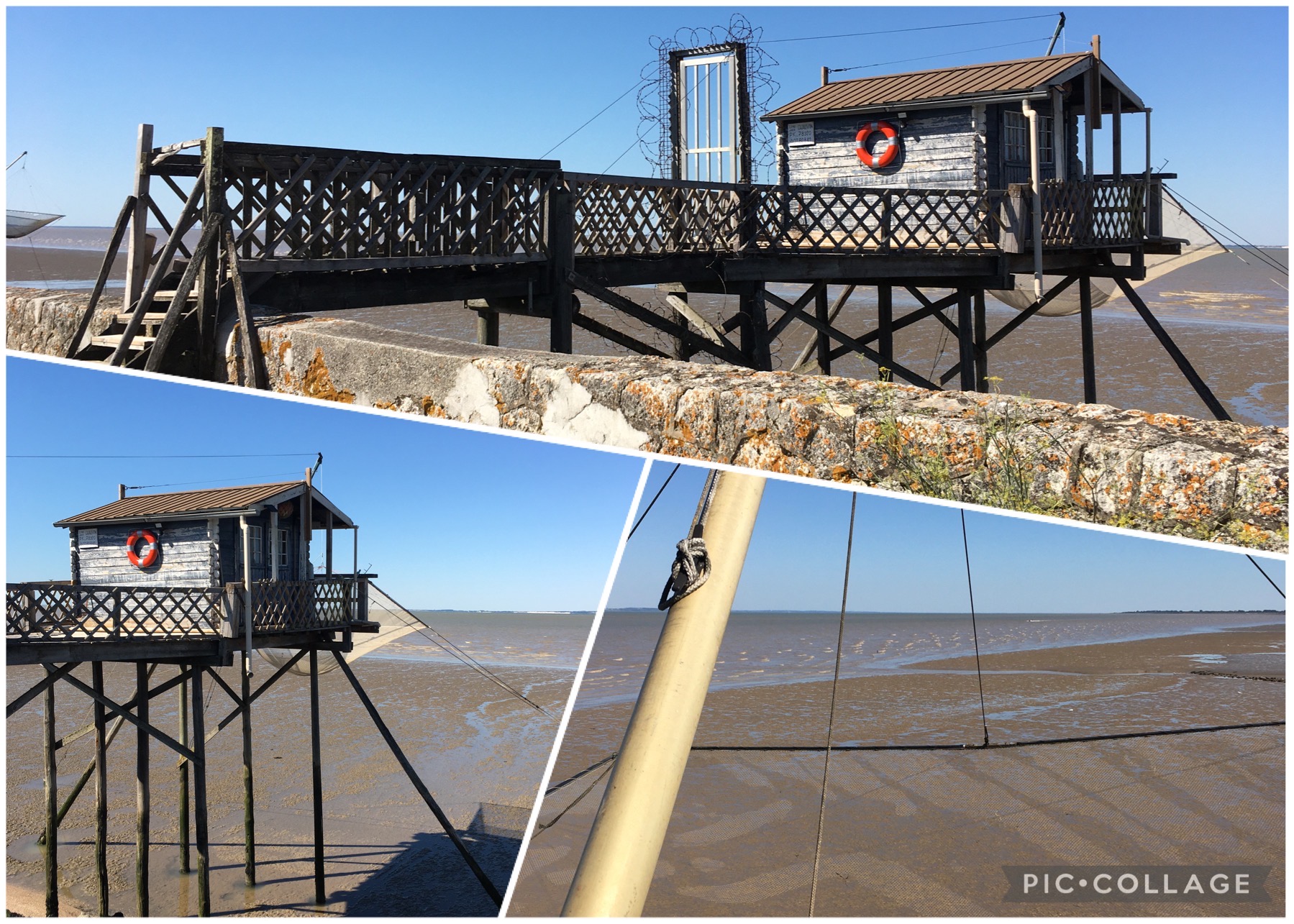Fun facts about ‘carrelets’ (for the holidays) : three questions and answers
1. What is a ‘carrelet’?
‘Carrelet’ means sole but the term ‘carrelet’ or ‘pêcherie’ is also used for traditional fishing huts on stilts by the waterside with a square net and a pulley. In France they can be found on the Atlantic coast near rivers and estuaries and their origin dates back from before the 17th century. Initially, fishing was done on foot, using a square net. The fishing huts date from the early 19th century.
The construction of a ‘carrelet’ is bound to strict rules nowadays. There is more freedom for furnishing the interior. Furniture is allowed, such as a wooden table and wooden benches.
2. How does it work?
The fisherman lowers the net into the water with a pulley and, after some time, hauls it up again as switfly as possible. A landing net is used to pull up any catch. Catching protected species, such as salmon and sturgeon, is not allowed. Fishing should be for private use only.
‘Carrelet’-fishing is a social pastime, with family, friends and neighbours lending a hand with the construction. Everyone gathers around the table to eat the fish in the ‘carrelet’ and to enjoy a friendly drink or two of course.
3. Who owns the ‘carrelets’?
Most ‘carrelets’ stay in the family for generations. Being a member of a local fishermen’s association is mandatory.
The owner of a ‘carrelet’ does not own the land. ‘Carrelets’ are located in the public domain and using them requires a licence. Such licences are allocated for a specified period and against payment of a yearly retribution.
Various organisations manage the areas on which the ‘carrelets’ are built on behalf of the French government. For instance, the Grand Port Maritime de Bordeaux is the administrator of the left bank of the Gironde estuary.
Since 2020 the ‘carrelets’ have officially been acknowledged as part of the identity of the département of the Gironde. As of 12 February 2021 ‘carrelet’-fishing is on the list of intangible cultural heritage of France.
Unfortunately the consequences of global warming are a threat to the survival of the ‘carrelets’ too. Rising water levels, more frequent storms and floods are a danger for the stability of the platforms.
Sources:
- Association des Pêcheurs au Carrelet de l’Estuaire de la Gironde
- Fiche d’inventaire du patrimoine culturel immatériel, La pêche au carrelet sur l’arc atlantique, N° de la fiche 2020_67717_INV_PCI_FRANCE_00490
- SUDOUEST, Gironde : la pêche au carrelet inscrite au patrimoine culturel immatériel, Gaëlle Richard, 16 April 2021
On the picture: a ‘carrelet’ in the place with the wonderful name Jau-Dignac et Loirac

